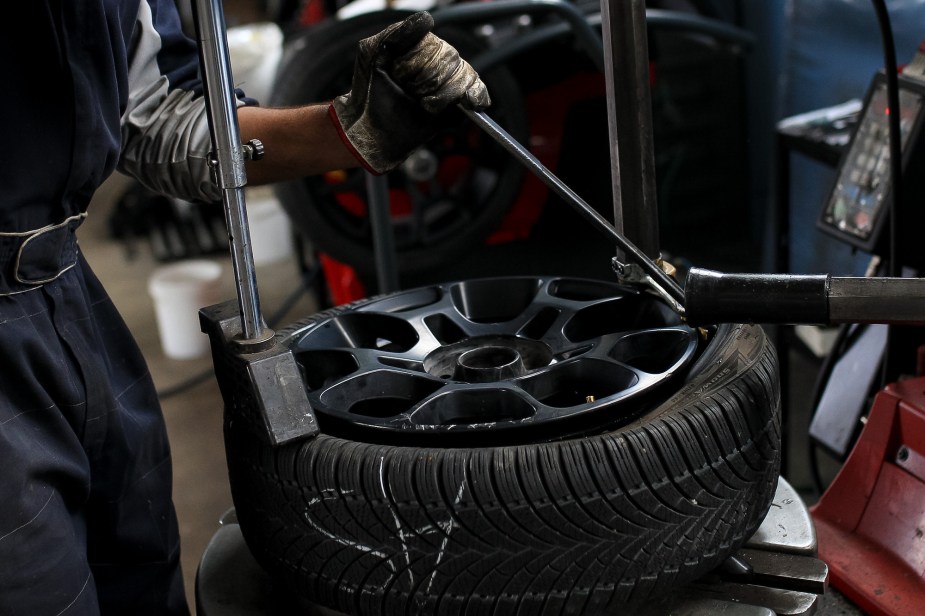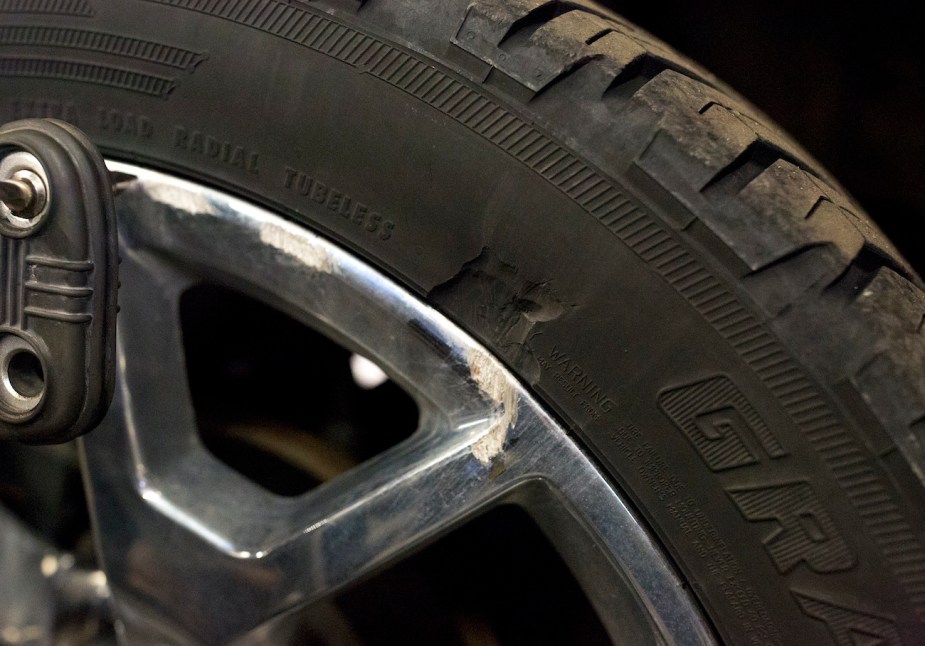
Do You Have to Replace All 4 Tires at Once?
So you’ve got tire problems. Whether it’s a hole in one tire, a tear in another, or a problem with all four, tires need replacing. If only one tire needs to be replaced, can you do it without changing the other three? Of course, it’s possible, but is it bad for the tires? Evenly worn tires are essential, but what are the rules and regulations around changing one or more tires at a time? Do you have to replace all four tires at once?
Should all four tires be the same?

According to Cars.com, all four tires should ideally be the same. We don’t just mean mounting them at the same time. We’re talking ideally; the model, type, and degree of wear should always be the same. Simply put, a car has four tires, and all of them must behave the same way. Accelerating, braking, or other actions can become unbalanced or even unpredictable if one or more tires differ from the rest. The last thing a driver wants is poor traction and performance, vital in traffic or fast-stopping situations.
Typically, tire treads are measured using 32nds of an inch. As a result, brand new ones range from around 10-12/32 treads. Replacing a car’s tires is essential whenever the tread gets too low. It’s usually considered time to change your tires when they reach under 4 or 5/32. Upon replacing all four tires, let’s say one of the new units rips and needs replacing. If all four tires are down to 10/32 from 12/32, it’s probably OK to replace only one tire. However, if the other three tires measure 6/32, your vehicle will perform very differently with one brand-new tire.
Can you always replace one tire?

Although newer, less worn tires can still function fine with one replacement, that isn’t always the case. Cars.com says some manufacturers of all-wheel drive vehicles recommend all tires be replaced. Moreover, new tires have a larger overall diameter than used ones. As a result, even missing just a few 32nds of tread depth will result in the tire spinning faster than new ones, which could cause the AWD system to engage on dry pavement. Furthermore, it could damage the AWD system and cost far more money to repair than a few extra tires.
AWD and four-wheel drive vehicles should have all four tires replaced. Unfortunately, that means one significant tire malfunction results in a costly repair. Front- or rear-wheel drive vehicles are only a little bit different. Traction control and antilock braking systems could produce issues if low-tread tires remain on the car with new ones. In addition, cornering and braking will become a problem. With two-wheel drive vehicles, replacing the tires that share an axle is better. Whether the car is rear- or front-wheel drive, always replace the front or rear two tires together.
Is there a cheaper alternative to replacing all four tires?

Replacing tires is a costly thing to do. It especially feels horrible when only one tire truly needs replacing. There are a few things owners can do before getting to this point. First, take your vehicle to tire experts to ensure they cannot repair it. A patch, plug, or another repair tool can make a difference and last a surprisingly long time.
Next, Cars.com says some tire dealers can shave tread off a new one. As a result, the newest tire will be even with the older ones. This will make the vehicle ride evenly, even though two or three tires are old and used. Most tire sellers have a special machine that can take care of it, likely for an additional fee, but it’ll be cheaper than three more tires.
What will happen if you replace one tire?
Replacing one tire can cause many different problems. Some are the traction control or AWD system problems we mentioned earlier. In addition, be sure to replace one tire with the exact model, size, and tread pattern as the other three. Mounting a different type of tire will cause more revolutions per mile, which could make the brand-new tire wear out even faster than the old ones. Additionally, experts say always to mount one or two new tires in the rear.
“If new tires are mounted on the front, the worn tires in the rear would be more susceptible to hydroplaning — riding on top of water on the road — and possibly causing the vehicle to rotate in a turn.”
Cars.com
In conclusion, ideally, you should always replace all four tires at once. Especially with all-wheel drive vehicles, one or two tires could cause issues with the system. This would eventually be much more expensive to repair than a few extra tires. There are many ways to repair tires, so always exhaust all resources before replacement. If three tires still have thick tread depth, it’s likely to be OK to replace only one. However, one new tire, or a different brand tire, could cause many issues. Consult tire experts on best practices, but be sure to keep an even tread depth for an optimal ride.



